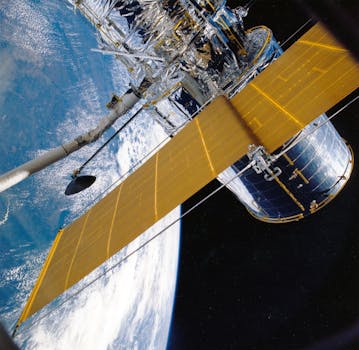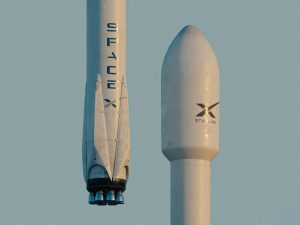
LEO Satellites: Revolutionizing Global Connectivity with WordPress
Low Earth Orbit (LEO) satellites are a type of satellite that orbits the Earth at an altitude of around 160 to 2,000 kilometers. These satellites have been gaining popularity in recent years due to their potential to provide global connectivity and revolutionize the way we communicate. With the help of WordPress, we can explore the world of LEO satellites and their applications in depth.
What are LEO Satellites?

LEO satellites are a type of satellite that orbits the Earth at a low altitude, which allows them to complete one orbit around the Earth in approximately 90 minutes. This means that LEO satellites can provide real-time communication services and can be used for a variety of applications such as navigation, remote sensing, and communication. One of the main advantages of LEO satellites is that they have a lower latency compared to traditional geostationary satellites, which makes them ideal for real-time communication applications.
Applications of LEO Satellites

LEO satellites have a wide range of applications, including global connectivity, navigation, remote sensing, and communication. One of the most promising applications of LEO satellites is providing internet connectivity to remote and underserved areas. Companies such as SpaceX and OneWeb are working on launching constellations of LEO satellites to provide global internet connectivity. LEO satellites can also be used for navigation, such as providing location services and tracking weather patterns. Additionally, LEO satellites can be used for remote sensing, such as monitoring crop health and tracking natural disasters.
Benefits of LEO Satellites

LEO satellites have several benefits, including lower latency, higher bandwidth, and lower costs compared to traditional geostationary satellites. The lower latency of LEO satellites makes them ideal for real-time communication applications, such as video conferencing and online gaming. The higher bandwidth of LEO satellites also makes them suitable for applications that require high-speed data transfer, such as streaming and cloud computing. Additionally, LEO satellites are less expensive to launch and maintain compared to traditional geostationary satellites, which makes them a more cost-effective option for many applications.
Challenges and Future Developments

While LEO satellites have many benefits, there are also several challenges that need to be addressed. One of the main challenges is the need for a large number of satellites to provide global coverage, which can lead to increased costs and complexity. Additionally, LEO satellites have a shorter lifespan compared to traditional geostationary satellites, which means that they need to be replaced more frequently. Despite these challenges, the future of LEO satellites looks promising, with many companies and organizations working on developing new technologies and applications for these satellites. With the help of WordPress, we can stay up-to-date with the latest developments in the field of LEO satellites and explore their potential in depth.
See more:



